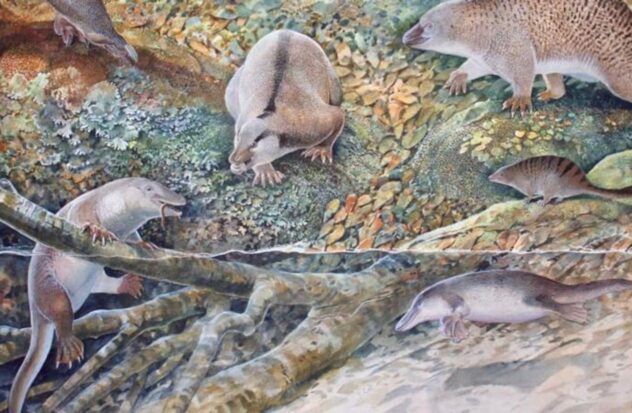Monotremata are a kind of mammalor which includes those species of the most primitive in historywhich have certain characteristics of reptiles and which have what is known as cloaca (an opening where the digestive, urinary and reproductive tracts meet). The jaw bone fossils of one of these animals were found in New south Wales (Australia), along with evidence of other monotreme species that are now extinct.
It turns out that, after being found 25 years ago by paleontologist Elizabeth Smith while in a palo mine, were donated to the Australian Museum. They have remained there, forgotten in a drawer, until two years ago. And the data obtained conclude that it is a new species believed to have lived in Australia in prehistoric timessince the fossils had an estimated age of about 100 million years.
This new species, officially called Opalios splendenshas been nicknamed as echidnapusdue to the similarity with the platypus and the echidna, the only mammals that, today, lay eggs. According to the team leading the investigation, this finding indicates that Australia had a day an era of monotremesin which they were dominant.
A new civilization
Australia is known as the land of the marsupials, but the discovery of these fossils is the first indication that it was formerly home to a diversity of monotremes. “It’s like discovering a whole new civilization,” said Professor Tim Flannery, honorary associate of the Australian Museum.
Some of the bones discovered belonged to another species already discovered, the Steropodon galmanibut the others were not familiar to Flannery, who upon seeing them already knew that They belonged to ancient monotremata. Thus, they discovered evidence of three previously unknown species. According to Professor Kris Helgen, director of the Australian Museum Research Institute (AMRI), they saw combinations of characteristics never before seen in living or fossil monotremes.
The general anatomy of Opalios splendens It is probably quite similar to that of the platypus, but with features of the jaw and the snout a little more similar to that of an echidna. It occupies a place in the evolutionary tree prior to the evolution of the common ancestor of the monotremes that we have today, says Helgen. They are a revelationpoints out paleontologist Smith, who discovered them a quarter of a century ago.
A fact that draws the attention of experts about these mammals is how have they been losing their teeth. What we see in the Lightning Ride (the site where they were found) is that 100 million years ago some of the monotremes still had five molars, but some had reduced them to three, Helgen points out. For his part, Professor Flannery highlights the unusual thing about seeing six egg-laying mammals in the same image living together in Lightning Ride, once a cold, damp forest bordering an inland sea.
Follow the Diario AS channel on WhatsAppwhere you will find all the sport in a single space: the current news of the day, the agenda with the latest news of the most important sporting events, the most outstanding images, the opinion of the best AS brands, reports, videos, and some humor from time to time.




